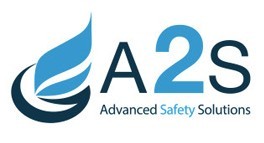How to carry out an effective ATEX audit?
Conducting an effective ATEX (Atmosphères Explosibles) audit is essential to ensure safety in industrial environments where explosion risks are present. An ATEX audit helps identify risk areas, assess the safety measures in place and determine the actions needed to comply with regulations and protect workers and facilities. Here is a step-by-step guide to conducting an effective ATEX audit, highlighting the key points to consider.
Step 1: Prepare for the audit
Defining objectives
Clarify what the audit should accomplish, including identification of risk areas, assessment of existing protective measures, and compliance with ATEX regulations.
Collecting preliminary information
Gather facility plans, safety data sheets for substances used, previous audit reports, and any other relevant documents.
Training of the audit team
Ensure that the audit team has the necessary technical skills and knowledge, particularly regarding ATEX regulations and risk assessment procedures.

Step 2: Identification and classification of ATEX zones
Identification of risk areas
Determine where explosive atmospheres may form based on the processes and substances used in the facility.
Classification of areas
Classify ATEX zones into Zone 0, 1 or 2 for gases, vapours and mists, and Zone 20, 21 or 22 for dusts, depending on the frequency and duration of the occurrence of an explosive atmosphere.
Step 3: Evaluation of protective measures
Equipment Check
Examine whether equipment used in ATEX zones is suitable and certified in accordance with ATEX standards.
Preventive measures
Evaluate operational procedures, ignition control measures, and ventilation systems to prevent the formation of explosive atmospheres.
Security systems
Ensure that gas detection and fire-fighting systems are in place and functioning properly.
Step 4: Staff training and awareness
Training evaluation
Ensure that personnel working in or near ATEX areas have received adequate training on the risks and safety procedures to follow.
Awareness
Ensure that clear safety signs and displays are in place to inform personnel of ATEX hazards and areas.
Step 5: Documentation and emergency procedures
Verifying documentation
Review whether all documents required by ATEX regulations, including the risk assessment and explosion protection file, are up to date and complete.
Emergency plans
Ensure that emergency procedures specific to ATEX risks are developed, known to all employees and regularly tested.
Step 6: Audit report and action plan
Drafting the audit report
Prepare a detailed report including findings, identified risk areas, and recommendations to address deficiencies.
Action plan
Develop an action plan prioritizing corrective actions to be taken, assign responsibilities and set deadlines for their implementation.
A2S, an expert company in the field of industrial safety, offers a complete and tailor-made service for carrying out ATEX audits. From the first stage of analysis of the risks of explosive atmospheres to the final validation of compliance, A2S supports its customers throughout the process.
The qualified team carries out a thorough assessment of the facilities, identifying risk areas and proposing suitable solutions to ensure the protection of personnel and equipment. A2S experts have a perfect command of ATEX regulations and the standards in force, thus guaranteeing a comprehensive audit that complies with legal requirements. Thanks to a rigorous approach and their recognized expertise, A2S is able to take charge of the entire ATEX audit process, from A to Z, thus offering complete peace of mind to companies concerned with securing their activities.
